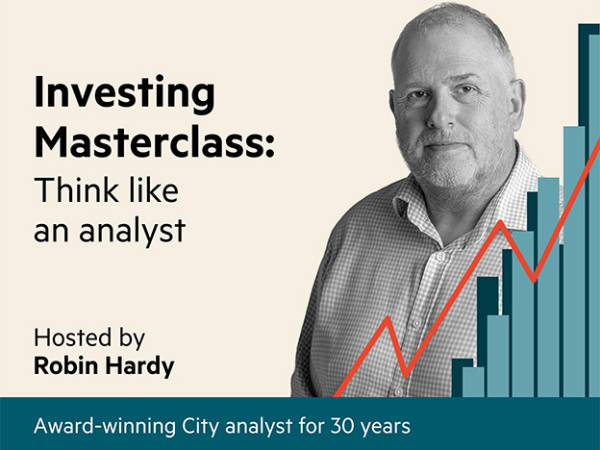Success has many fathers, as the saying goes, but failure is an orphan. There is no shortage of books on how to achieve business success but there is also much to be learned from sifting through the rubble of companies that have failed, and pinpointing where the cracks first appeared.
The books we read
Damaged Goods: The inside story of Sir Philip Green, the collapse of BHS and the death of the High Street, Oliver Shah (2018)
Bad Blood: Secrets and lies in a Silicon Valley startup, John Carreyrou (2018)
The Smartest Guys in The Room, Bethany McLean, Peter Elkind (2003)
Helpfully, there is also a large canon of books on business collapses, and preparing for this book club was as much about choosing which stories not to read. Damaged Goods follows the story of Sir Philip Green, the notorious retail entrepreneur, from his roots in Croydon to the top of the UK retail industry. BHS collapsed in 2016 and has since been mired in controversy over how management dealt with the pension scheme deficit.
Bad Blood follows the story of Theranos, a supposedly revolutionary blood testing start-up led by Elizabeth Holmes. The company claimed to be able to perform dozens of blood tests on a single drop of blood, vastly reducing the cost of testing and reducing needle usage. Unfortunately, the technology didn’t work, the company collapsed, and Ms Holmes has been charged with fraud by the US Attorney’s office, and banned from serving as an officer or director of a public company for 10 years. The Smartest Guys in The Room tells the story of Enron, once the most admired company in America, brought down by its fraudulent accounting practices and toxic culture.
Watch out for market darlings
Each case involves a spectacular fall from grace. Sir Philip Green was knighted by Tony Blair’s government and counted celebrities such as Kate Moss and Simon Cowell as close associates. Elizabeth Holmes was the youngest self-made female billionaire in the world and the subject of numerous fawning profiles comparing her to business leaders such as Bill Gates and Steve Jobs. In similar fashion, Enron executives Jeff Skilling and Ken Lay had the “aura of whiz kids, of golden boys who could do no wrong”, in the words of Thomas Kuhn, president of the Edison Electric Institute.
It pays investors to be sceptical, to look behind the coverage a company or figure is getting and to build a deeper understanding of what makes the business or its technology work. Theranos began to unravel when it became clear its technology could not do what was claimed, but it was a story in the New Yorker magazine that set events in motion. In retrospect, the piece was unnervingly complimentary – at one point it quotes former US Defence Secretary William J Perry saying comparisons between Steve Jobs and Holmes are “inadequate” as “she has a social consciousness that Steve never had”. For a layperson, there was every indication that Theranos had successfully invented a world-changing technology. However, the article was read by a pathologist named Adam Clapper, whose expert knowledge led him to query the company’s claims. He contacted John Carreyrou, a Wall Street Journal reporter who began investigating the company.
Universally positive reporting can also be a sign of potential trouble. Far from indicating the business is beyond reproach, it can be a red flag that it is aggressive and ruthless in rooting out criticism. Journalist Oliver Shah opens Damaged Goods by recounting a morning in April 2016 when Sir Philip Green threatened to kill him for his negative coverage of BHS. The relationship between the two began on better terms, but Mr Shah writes: “Journalists who admired Green’s turnaround of BHS were rewarded with expansive interviews and tours of its flagship store on Oxford Street. The few who tried to question his apparent retailing alchemy were warned off with furious outbursts.”
Fevered attacks on negative coverage can be a warning sign. Bethany McLean claims Jeff Skilling called her “unethical” for raising questions about Enron, while Mr Carreyrou reports Ramesh Balwani, president and chief operating officer of Theranos, led employees on an expletive-ridden rant against the journalist at a company meeting. Judging the tone of any backlash is hard, but a nevertheless critical test of a company.
Follow the money...
The best way to get an idea of a company’s underlying performance is by looking at its accounts. The best example of this is Enron, which adopted mark-to-market accounting when it appointed Jeff Skilling as chief executive of its newly created finance division. One of the critical characteristics of mark-to-market is that it allows companies to book the entire estimated value of a contract the day it is signed, rather than as the cash is paid.
This method presented two problems. First, the discrepancy with the total lifetime value of a contract, so that a company that appears to be doing exceptionally well can end up short of cash – as Enron eventually did. Second, it skewed incentives. By booking the value of contracts when they were signed, the company preferred increasingly higher-value deals to maintain momentum and deliver growth for investors. Any accounting treatment is open to manipulation, so investors should ask not only how a company makes money, but how it books that money and what qualifies as a sale.
Getting a clear picture of the finances can be more difficult than it sounds. Theranos operated with a high level of secrecy, forbidding employees from including the company’s name on their LinkedIn profiles, and sending cease-and-desist letters to former employees who posted descriptions they deemed too detailed.
Mr Shah notes analysts did not realise the extent of BHS’s problems because it was “sheltered” within parent company Arcadia. Nevertheless, the deterioration in the pension funds from a £43m combined surplus in 2000 to a deficit of between £7.3m and £281.6m in 2006 – later to grow further as quantitative easing devastated pension funding valuations – might have given some indication, as might the more than £400m in dividends taken by Sir Philip and his partners in the business.
… but look beyond the numbers
Where numbers aren’t available, or can’t be trusted, there are still ways to get an idea of a company’s health. Mr Shah writes that, while BHS’s financial distress was difficult to see from its accounts, the picture on the ground was much clearer. He quotes a former shop floor employee of BHS saying the stores started looking shabbier, with lightbulbs going unreplaced, junior employees being made to do painting, and cleaning being neglected. Similarly, Richard Fuisz, a longstanding rival of Ms Holmes, found that a local Theranos clinic was unable to perform a test for creatinine – a common blood test – without special approval from the chief executive.
It is not always possible to visit a company’s outlets directly, in which case investors can find red flags elsewhere. One indicator – long assumed to be a positive – for Theranos was the quality of its board. Ms Holmes convinced highly influential people such as US statesman Henry Kissinger, US defence secretary James Mattis and former US treasury secretary George Shultz to join the board, and attracted investors such as Rupert Murdoch and San Francisco-based hedge fund Partner Fund. The prestige of these names helped bolster the company’s appeal, but after doubts over its technology begin to emerge, Silicon Valley venture capitalists began to query why none of the board members was an expert in blood science, and why it had failed to secure investment from any venture capital firms with expertise in healthcare.
Watch the workforce
One factor that united the stories of all three businesses was a culture of bullying, which led to high workforce turnover and moral failings, even if they may have begun as a sincere effort to improve performance. Enron’s elaborate peer review system unaffectionately nicknamed “rank-and-yank”. All employees of Enron’s capital and trade resources division were given ratings across various skills. Those at the bottom of the bell curve risked dismissal, while those at the top were richly rewarded.
More telling, perhaps, is how the companies reacted when they uncovered wrongdoing. When an Enron employee discovered an off-book bank account used for moving profits around, the people responsible claimed management had asked them to do it. Indeed, when it was later revealed bank statements were doctored to obscure a bonus paid to a trader, reprimands did not follow. A memo sent to the pair following a meeting with auditors and management asked that they “please keep making us millions”. One bonus might not mean much in the grand scheme of things, but a culture where bending the rules for profit is permissible can have wider-reaching consequences, as was seen later when Enron and other energy traders manipulated California’s energy markets to maximise profits, allowing rolling blackouts to ravage the state.
Bad Blood opens with the story of Henry Mosley, a former finance director at Theranos. After discovering the company’s technology could not produce reliable blood test results, he raised the issue with Ms Holmes, warning her they were misleading investors. Instead of addressing the problem, she accused him of not being a team player and fired him.
Bullying was rife in all three companies, but in some cases it seemed to originate from a single person. At Theranos that person was Ramesh ‘Sunny’ Balwani, former president and chief operating officer. Firings were common at the company before he joined, but Mr Carreyrou writes that after Mr Balwani joined he took on the role of ‘hatchet man’ and inspired a culture of fear, leading employees to coin a new phrase when someone was fired: “Sunny disappeared him”.
For BHS, that person was Sir Philip himself. Brian Hill, a former BHS employee, described him as a “vulgar bully”, prone to singling out and berating employees at meetings. Mr Hill later had altercations with him and left.
During the early days of Sir Philip’s tenure at BHS, pre-tax profits grew rapidly, from £18.5m in 2001 to £101.9m by 2004, and it could be argued his abrasive management style drove out some of the deadwood in the ranks. However, Mr Shah reports Sir Philip’s anger in 2003 when Jane Shepherdson – then the respected head of Topshop – was ranked above him in a list of the most influential people in high-street fashion. A few months later, Ms Shepherdson quit. Topshop continued to do well, and Mr Shah writes that the consensus in the fashion industry was that Ms Shepherdson had “left Topshop with enough fuel in the tank to keep it motoring ahead for several years”, before it plateaued and started to go downhill.
If there is one lesson that ties the three stories together, it is the dangers of taking things at face value and following the crowd. Theranos, Enron and BHS (at least under Sir Philip’s tenure) were well-loved companies. Investors should be suspicious when a growth story looks too good to be true, and be willing to look beyond the numbers to get an idea of what is going on.
The books also highlight the importance of company culture. For Enron, the willingness to bend the rules and game the system exacerbated the risks of its mark-to-market accounting treatment and the manipulation of the California energy market. For Theranos, excessive secrecy and insecurity obscured the fact that the company could not do the things it claimed. Whenever there is a well-known leader, there is the risk of a cult of personality. It would be easy to dismiss a focus on workplace wellbeing as irrelevant to company performance but, as our recent feature on sustainable investment showed, fund managers are increasingly looking to it as a factor in company performance over the long term.










